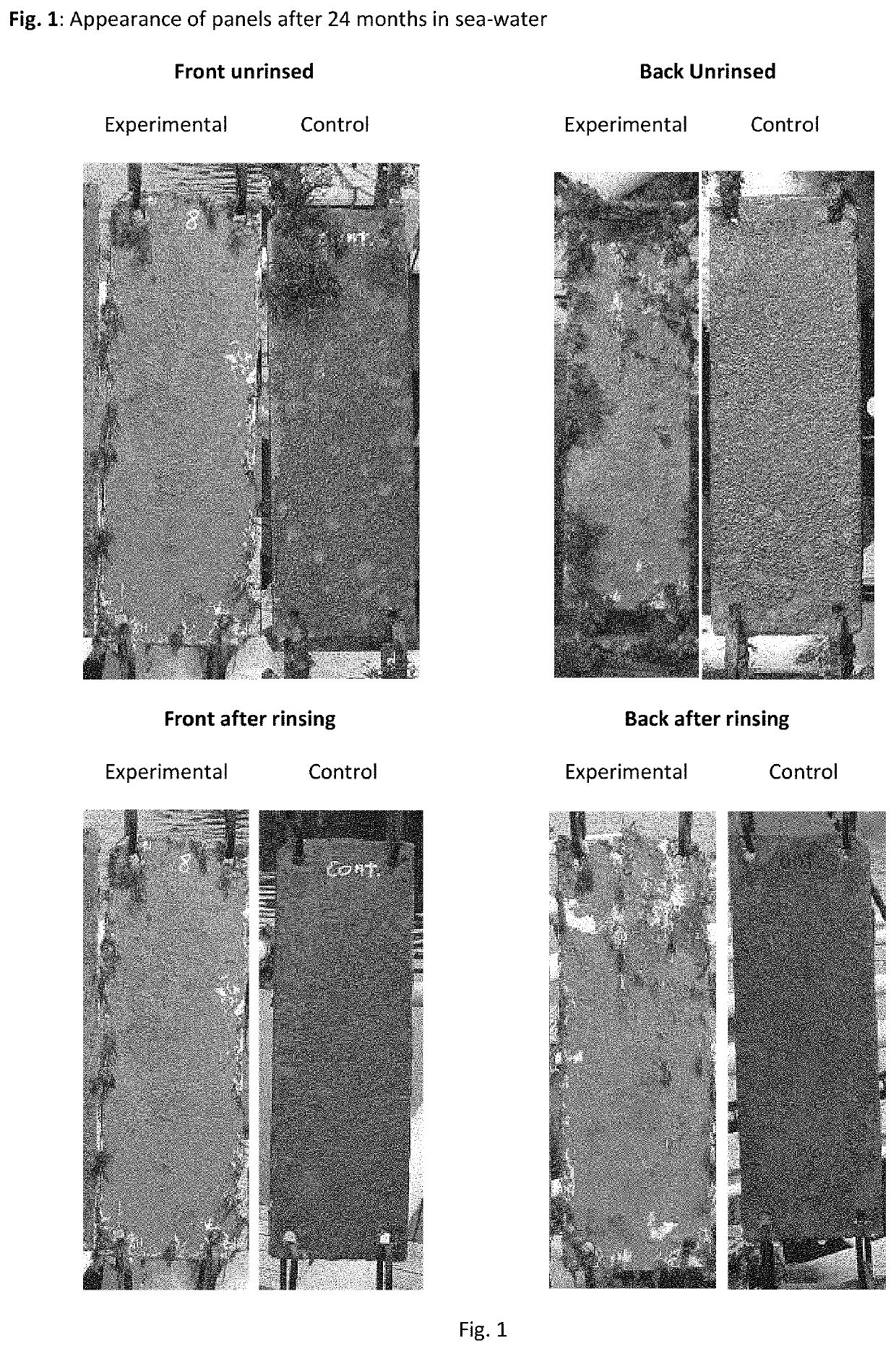Copper Chelate Complex Compositions for Antifouling Protection
a technology of copper chelate and complex compositions, applied in the field of antifouling compositions, can solve the problems of increasing fuel consumption, reducing the speed of the ship, and affecting the safety of the ship,
- Summary
- Abstract
- Description
- Claims
- Application Information
AI Technical Summary
Benefits of technology
Problems solved by technology
Method used
Image
Examples
example 1
on of Exemplary Polymer-Based Binders for Antifouling Paints
[0076]Different exemplary polymer-based binders that can be used in self-polishing antifouling paints or hybrid coatings have been prepared as outlined in the following.
example 1a
of an Acrylate Polymer “Acid Acrylate Low Acid Value” Referred to Herein as “Ac (AV=100−)”
[0077]
DescriptionQuantity (g)Weight (%)MPM355.0311.83Xylene671.0122.37ethyl acrylate56.81.89bring to 100° C. while mixing and drop into the following mixture over 6 hoursmethyl methacrylate213.027.1ethyl acrylate1009.4733.65methacrylic acid149.114.97Xylene147.934.93Methyl Styrene Dimer14.20.47AIBN35.51.18AMBN99.413.31add chaser and xylene over 1 / 2 hourt-butylperoxy 2-ethylhexyl carbonate7.10.24Xylene143.24.77mix for 90 minutes after chaser is in. Cool down and addXylene98.223.27Total3000100Manual Yield %100Net3000
example 1b
of an Acrylate Polymer “Acid Acrylate 100 Acid Value” Referred to Herein as “Ac (AV=100)”
[0078]
DescriptionQuantity (g)Weight (%)MPM355.511.85Xylene668.422.28ethyl acrylate56.71.89bring to 100° C. while mixing and drop into the following mixture over 6 hoursmethyl methacrylate142.24.74ethyl acrylate867.328.91methacrylic acid142.24.742-methoxyethyl acrylate213.67.12Xylene142.24.74Methyl Styrene Dimer14.10.47AIBN35.41.18AMBN99.33.31add chaser and xylene over 1 / 2 hourt-butylperoxy 2-ethylhexyl carbonate7.20.24Xylene142.24.74mix for 90 minutes after chaser is in. Cool down and addXylene113.73.79Total3000100Manual Yield %100Net3000
PUM
| Property | Measurement | Unit |
|---|---|---|
| Content | aaaaa | aaaaa |
| Antifouling properties | aaaaa | aaaaa |
Abstract
Description
Claims
Application Information
 Login to View More
Login to View More - R&D
- Intellectual Property
- Life Sciences
- Materials
- Tech Scout
- Unparalleled Data Quality
- Higher Quality Content
- 60% Fewer Hallucinations
Browse by: Latest US Patents, China's latest patents, Technical Efficacy Thesaurus, Application Domain, Technology Topic, Popular Technical Reports.
© 2025 PatSnap. All rights reserved.Legal|Privacy policy|Modern Slavery Act Transparency Statement|Sitemap|About US| Contact US: help@patsnap.com

